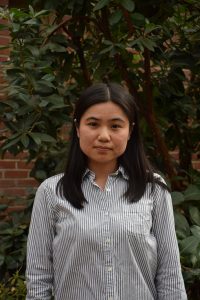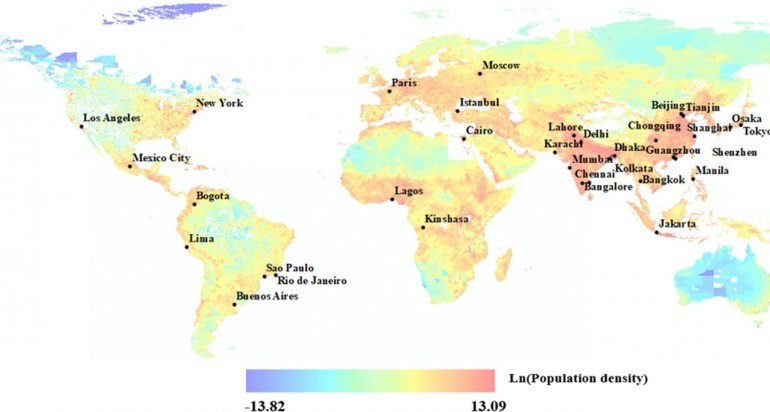With one look into the hazy skies overhead on a hot summer day, residents of Los Angeles or Beijing can reasonably conclude that their region is experiencing poor air quality. And without being a scientist, they can recognize that higher levels of air pollution are associated with health hazards. But can residents of these densely populated cities reduce their exposure to air pollution if they move to a less densely populated part of their city?
Lili Zhang with the Aerospace Information Research Institute (AIRI) of the Chinese Academy of Sciences, with John P. Wilson, Ph.D., professor and founding director, and Beau MacDonald, GIS project specialist, of the Spatial Sciences Institute at the University of Southern California, addressed this question in their article “The changing PM2.5 dynamics of global megacities based on long-term remotely sensed observations” just published in Environment International.
Joining Zhang, Wilson and MacDonald as co-authors on this article were Wenhao Zhang with the North China Institute of Aerospace Engineering and Tao Yu with AIRI.
Zhang and the research team examine 33 megacities and divided them into densely, moderately and sparsely populated areas using the degree of urbanization classification based on gridded population counts. They then studied the spatiotemporal dynamics connecting the residents and PM2.5 concentrations in these areas.
By using GIS spatial analysis methods combined with the information acquisition capabilities of remote sensing, the team found that the areas with higher population densities experience higher PM2.5 concentrations and the PM2.5 concentrations in densely populated areas are positively correlated with those in moderately and sparsely populated areas. These results suggest that residents in these megacities cannot expect to lower their PM2.5 exposures by moving to less densely populated parts of the same megacity.
 The published research is a result of Zhang’s work she undertook during a one-year appointment with the USC Spatial Sciences Institute as a visiting scholar. “My one year’s experience as a visiting scholar in SSI was a great benefit in furthering the spatial analytics aspect of this project,” said Zhang. “When I returned to AIRI, I was awarded a 3-year National Natural Science Foundation of China grant to continue my work using remote sensing to study air quality and the accompanying health impacts of poor air quality. With the support of this grant and the continuing support of Dr. Wilson and SSI, I am able to continue to work at the intersection of environmental remote sensing and human health with a focus on Asia.”
The published research is a result of Zhang’s work she undertook during a one-year appointment with the USC Spatial Sciences Institute as a visiting scholar. “My one year’s experience as a visiting scholar in SSI was a great benefit in furthering the spatial analytics aspect of this project,” said Zhang. “When I returned to AIRI, I was awarded a 3-year National Natural Science Foundation of China grant to continue my work using remote sensing to study air quality and the accompanying health impacts of poor air quality. With the support of this grant and the continuing support of Dr. Wilson and SSI, I am able to continue to work at the intersection of environmental remote sensing and human health with a focus on Asia.”
Zhang intends to examine the burden of disease in terms of the numbers of premature deaths and lost productivity attributable to PM2.5 pollution in these global megacities, and to explore PM2.5 trends in the regions surrounding each of the 33 megacities to provide a better picture of the spillover effects and contributions of medium-sized cities in Asia and other parts of the world.
“Lili is to be congratulated for her lead in producing this paper in such a prestigious journal with a high impact factor. She already is making great scholarly contributions in an important and emerging area of geohealth,” said Wilson.
Learn more about SSI’s research that promotes human well-being at https://spatial.usc.edu/promoting-human-well-being/ and find out more about Wilson’s research and the work of the Wilson Map Lab at https://spatial.usc.edu/promoting-human-well-being/.




